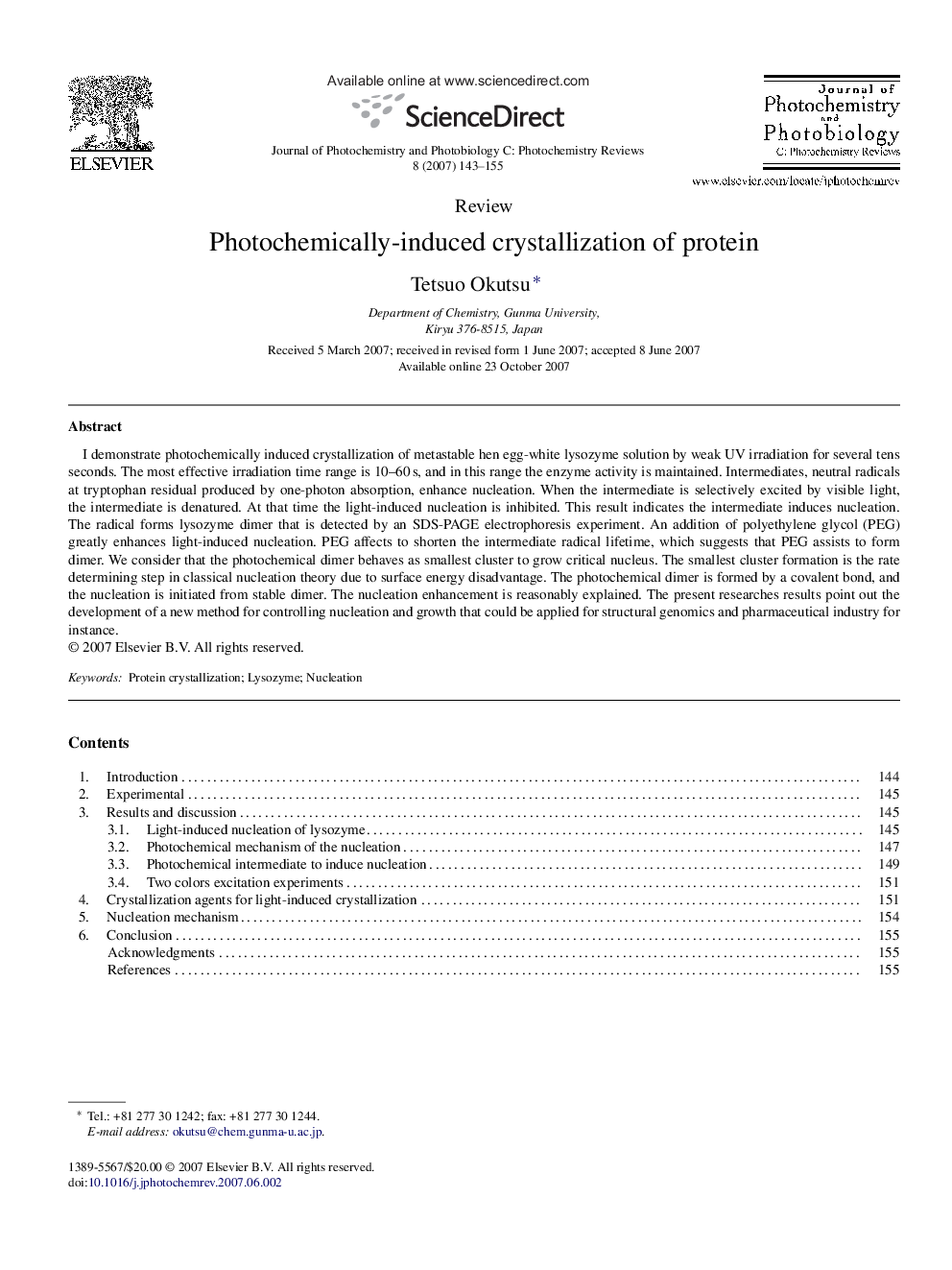| Article ID | Journal | Published Year | Pages | File Type |
|---|---|---|---|---|
| 31385 | Journal of Photochemistry and Photobiology C: Photochemistry Reviews | 2007 | 13 Pages |
I demonstrate photochemically induced crystallization of metastable hen egg-white lysozyme solution by weak UV irradiation for several tens seconds. The most effective irradiation time range is 10–60 s, and in this range the enzyme activity is maintained. Intermediates, neutral radicals at tryptophan residual produced by one-photon absorption, enhance nucleation. When the intermediate is selectively excited by visible light, the intermediate is denatured. At that time the light-induced nucleation is inhibited. This result indicates the intermediate induces nucleation. The radical forms lysozyme dimer that is detected by an SDS-PAGE electrophoresis experiment. An addition of polyethylene glycol (PEG) greatly enhances light-induced nucleation. PEG affects to shorten the intermediate radical lifetime, which suggests that PEG assists to form dimer. We consider that the photochemical dimer behaves as smallest cluster to grow critical nucleus. The smallest cluster formation is the rate determining step in classical nucleation theory due to surface energy disadvantage. The photochemical dimer is formed by a covalent bond, and the nucleation is initiated from stable dimer. The nucleation enhancement is reasonably explained. The present researches results point out the development of a new method for controlling nucleation and growth that could be applied for structural genomics and pharmaceutical industry for instance.
